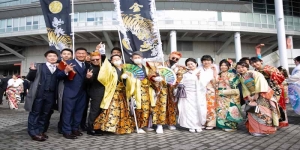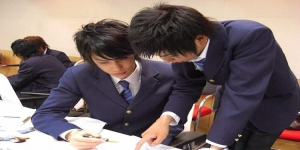Birth of manga ....... Japan or China
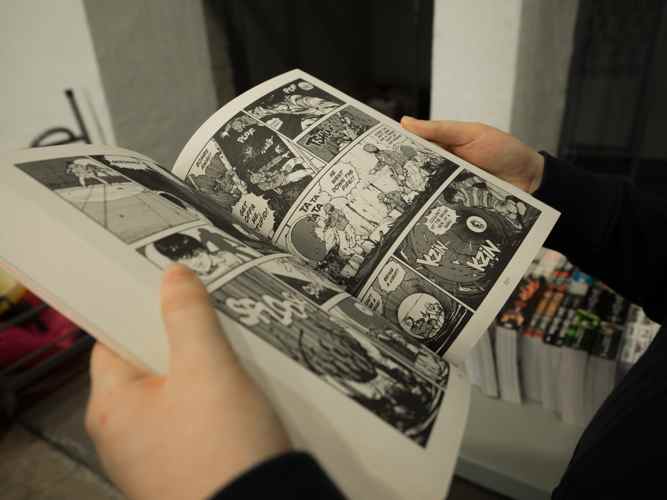
For a large part of Manga and Anime fans it is indisputable and well known that they are of Japanese origin, however it is difficult to say when they were born exactly and they are really not the usual Chinese invention transposed to Japan,
as the "non-connoisseurs" claim? To answer these questions, I did a short research which I expose in this article.
Manga - Japan
First of all, the manga as we know them today, with all the peculiar characteristics regarding storyboard, character design and a conclusion whose protagonist at the end leaves the scene and is not reused, like the actors of the Noh theater, date back to the concept implemented by the undisputed Master Osamu Tezuka in 1946.
But the origin story goes back further in time because "manga" (漫画) is a rather generic term: the word was coined in 1905 by the artist Rakuten Kitazawa by combining the ideograms of man (free / extravagant) and ga (image ), therefore it translates as "derisive images / bizarre drawings" and therefore indicates all comics of any kind, it follows that the first copies have very little to do with their current appearance.
The story began when the tradition of the scroll was introduced in Japan by import from China in the 6th or 7th century, this called emakimono (絵 巻) was a work of horizontally illustrated narrative that combined text and painted images, developed as art during the Heian period (794-1185), the earliest native example is "The Story of Genji", dated 1130.
The emakimono tradition continued in the following period, Kamakura (1185-1333) and a sort of "embryo" dates back to this period: the Choju Jinbutsu Giga (鳥 獣 人物 戯 画 literally "Roll of excited animals" or "Caricature of fauna characters wild ") which is considered the first manga for the use of kinetic lines, however it has no text but only images of amusing animal scenes, metaphors of the uses of Japan in the twelfth century; this one contends the honor with another "text", the "Shigisan Engi Emaki".
The story goes on, however they are mostly illustration books and collections of drawings, in order we have the Toba-e, named after Toba Sojo, an 11th century artist, an example of this drawing book, considered the Japan's oldest manga collection is by Shumboko Ono, the first mangaka and is dated 1702.
Other illustration books follow including the "Shiji no Yukikai" by Santo Kyoden and the "Manga Hyakujo" by Aikawa Minwa, both dated 1798, including the manga of the famous Hokusai, published in 1814, but up to the 20th century. the term did not enter into common use and as mentioned it defined any narration illustrated by images with a more or less satirical content.
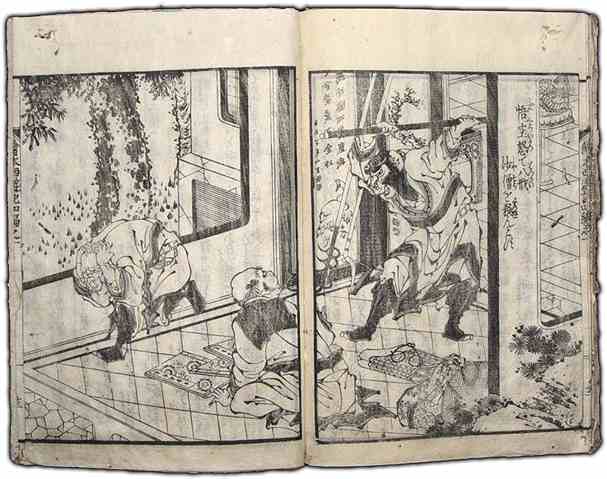
The Chinese background
The development of the same art in China is different. Here too, as in Japan, at first there is a sort of "general confusion" given that by definition expressed by the author of the book "Hong Kong Comics: a history of Manhua", Wendy Siuyi Wong, "Chinese comics include all the forms and styles of cartoons, comics and lianhuatu / lianhuanhua (traditional illustrated storybooks) "; substantial differences already appear: manhua (漫畫, 漫画), transliteration of manga into Chinese, indicates the comics intended, thanks to the definition adopted in 1925 by the artist Feng Zikai for his collection, published in the magazine Wenxue Zhoubao (a weekly literature ), such as propaganda, satirical cartoons and images generally accompanied by texts, with a more modern slant as graphics and story content, but also indicates illustrated books and caricatures.
Another term also emerges from the definition, lianhuatu / lianhuanhua which are tales illustrated on small booklets that fit on the palm of a hand, composed of images in sequence, generally one per page, usually organized with image above and didactic text below. ; patriotic messages have spread about this particular booklet and it is generally more tied to tradition.
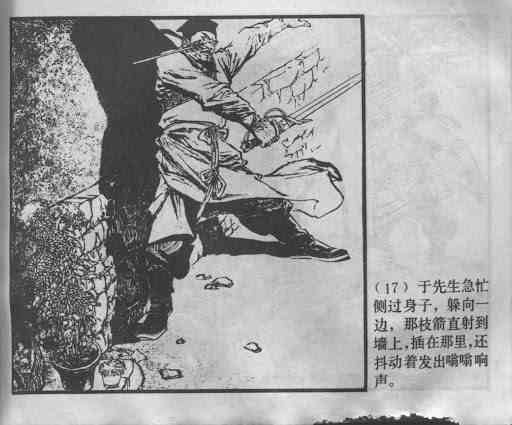
But let's go in order: both of these products, as reconstructed by A.Ying in his "Zhongguo Lianhuan Tuhuashi", derive from the illustrated narrative works of the period of the Yuan dynasty (1271-1368) and from the illustrated plays of the Ming period (1368-1644). ), but there are also those who connect lianhuanhua with Dunhuang frescoes and scroll paintings.
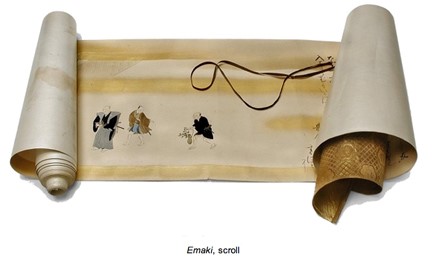
Certain fact in this regard is that the first example of illustrated narrative is considered the "Illustrated Novel taken from the Chronicles of the Three Kingdoms", dating back to the Yuan period and therefore, to answer the initial question whether the manga could have Chinese origin, the answer is no because this story is placed temporally after the publication of "The story of Genji", dated 1130. After various vicissitudes and historical vicissitudes of which this site is not the appropriate place to talk about it, given the predominantly Japanese treatment, I only mention the situation current.
The Manhua Today
Today's situation began after the death of the dictator Mao Zedong, precisely we can start talking about a "free" Chinese comic art (that is, not conditioned and strictly subject to political purposes) from 1973 onwards where, thanks also to the push of the first Minister Zhou Enlai, the comics resumed development: not only were comic works drawn from classical fiction and popular stories re-proposed, but new themes were also explored, such as detective stories and science fiction, as well as adaptations of works from contemporary and foreign Chinese literature .
This change plus China's openness to the rest of the world led cartoonists to look beyond borders, drawing more from Japanese and Western comics, this period coincided with the "golden age" of lianhuanhua which ended abruptly in 1985 when with the liberalization of the art market, most of the designers abandoned the lianhuanhua to devote themselves exclusively to art, which was much more profitable.
With the disappearance of the linhuanhua, the manhua flourished again, developing into "xinmanhua", that is "new manhua", which combined elements of the Chinese tradition with elements of foreign derivation, in particular Japanese.
Arriving in more recent times and at the dawn of 2000, the tragic events of Tiananmen hastily archived, China has definitively opened up to the world: this has allowed authors to find sources even in European comics, so much so that they have adopted the narrative model.
And so two diversifications developed: the first on a consumer level sees that while adults watch Western-style comics with authoritative works and committed stories with increasing interest, the young audience, influenced by Anime, becomes passionate about manga.
The second diversification is perhaps the most fascinating:
Mainstream
The common point between the two types of comics with different content is the digital means of diffusion. By "mainstream" we mean the manhuas approved by censorship and distributed most on online apps, such as "Kuaikan Manhua", founded in 2014, in 2019 it reached a turnover of 177 million dollars.
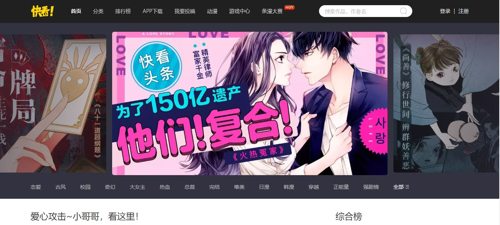
Underground
Alongside this phenomenon winds "the underground": made up of those alternative comics, with non-aligned contents that generally deal with political, sexual issues or "simply" the complexity of living in a society that is still oppressive in some respects.
This is the case of the "works" of Hu Xiaojiang, the Chinese independent cartoonist best known abroad. He gained some notoriety with 2008's "Istant Noodle" and at 42 he is a prolific illustrator and his work has appeared in Western glossy magazines including GQ and Men's Health.
In the comics world of this category he is best known as the co-founder of "Special Comix", a sporadically published anthology that features works from the Chinese niche comics community.
Born at the beginning of this century from a free association between creatives contacted in online forums, it favors hand-drawn comics that represent the unique style of their creators; the lack of funding and the obstacles to publication posed by government authorities made life difficult so much so that the co-founders funded the first two issues and it took a couple of years to recover the costs.
The good news comes from the fifth issue where they were able to use e-commerce platforms to sell over 1000 copies; these are small numbers when compared to the 10 million daily users of the previously mentioned app, however "Special Comix" allows Chinese artists to obtain international recognition and in 2010 the third volume won the alternative comic award at the Festival French International of Angoulême.
As can be seen, therefore, the Chinese comic exists, it is flourishing and can reach the level of the most popular manga, you just need to wait a bit.
Information Credits:
Gogonihon.com, Wikipedia, Otaku's journal, Giornale Pop, Scaffale cinese
Image Credits:
Otaku's journal, Giornale Pop, Scaffale cinese, Paradise-systems, Miika Laaksonen on Unsplash.
Samantha Sisto

 English (United Kingdom)
English (United Kingdom)  Italiano (it-IT)
Italiano (it-IT) 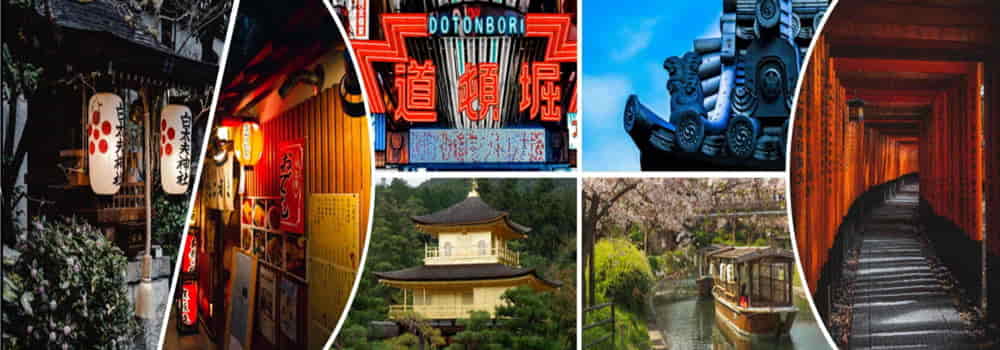
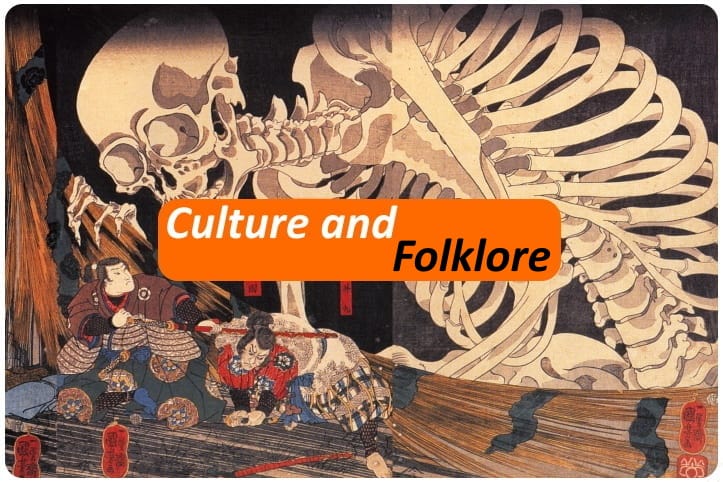




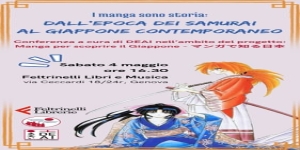
![[Review] Princess Toyotomiプリンセス トヨトミ](https://www.fukainihon.org//cache/mod_jt_contentslider/fdfb524f85518b9476158c79c8ea022f_328.png)

